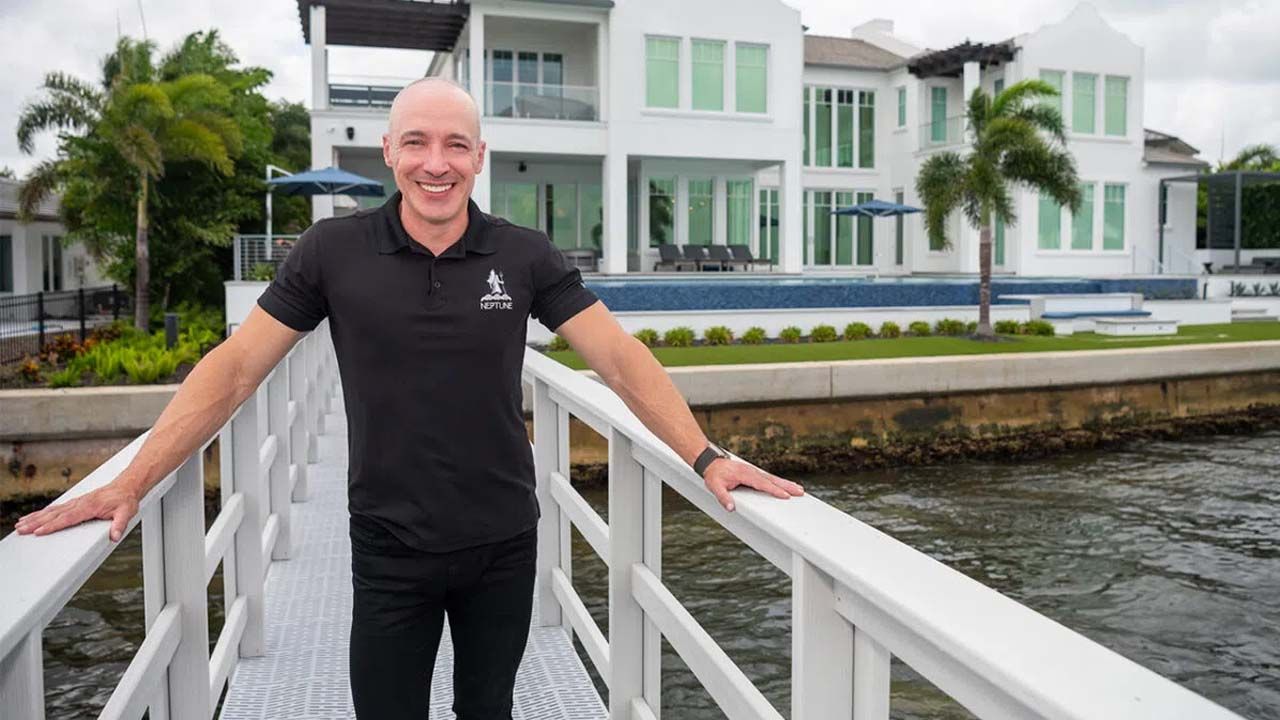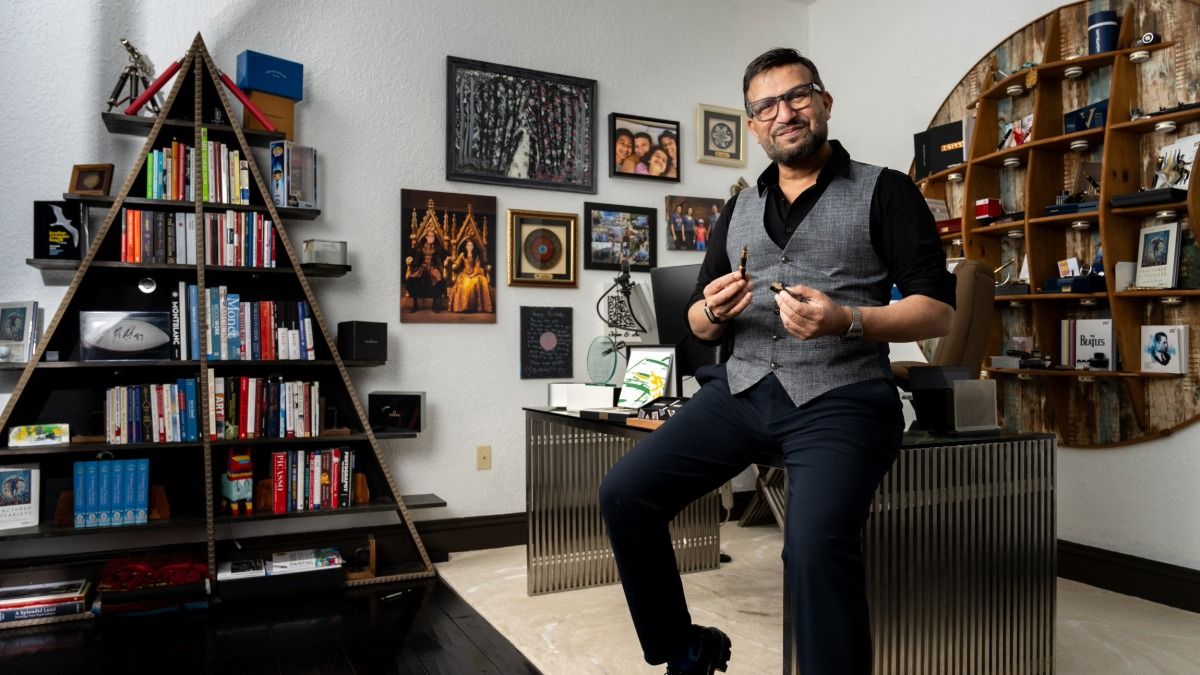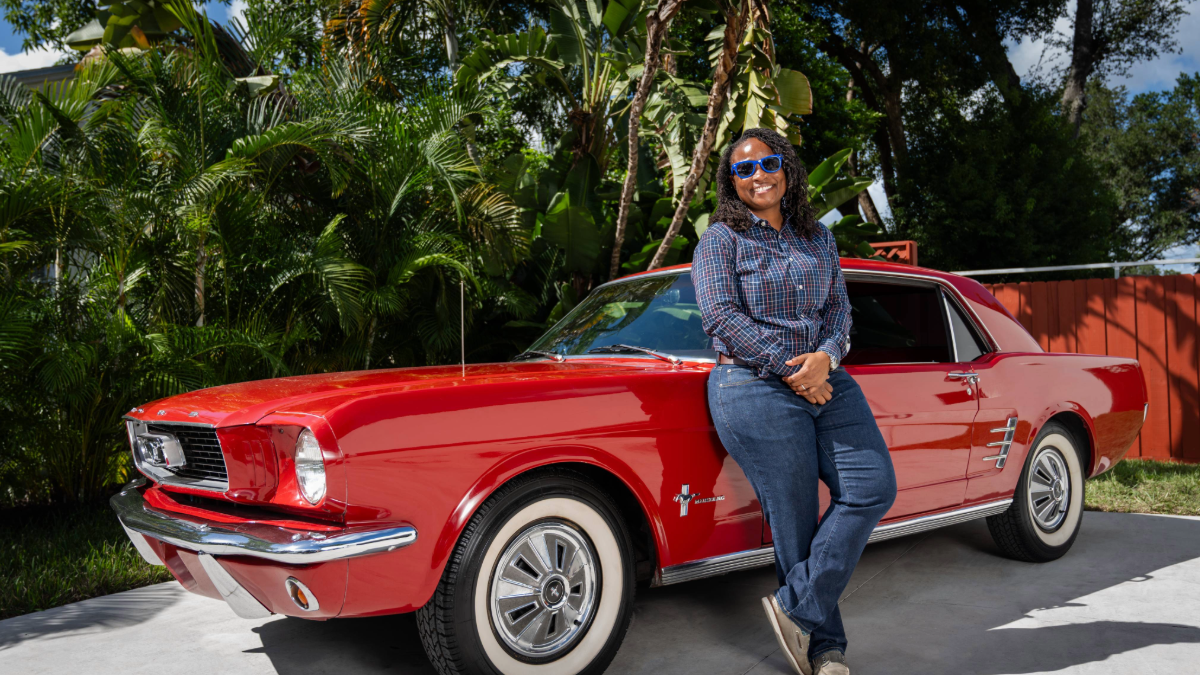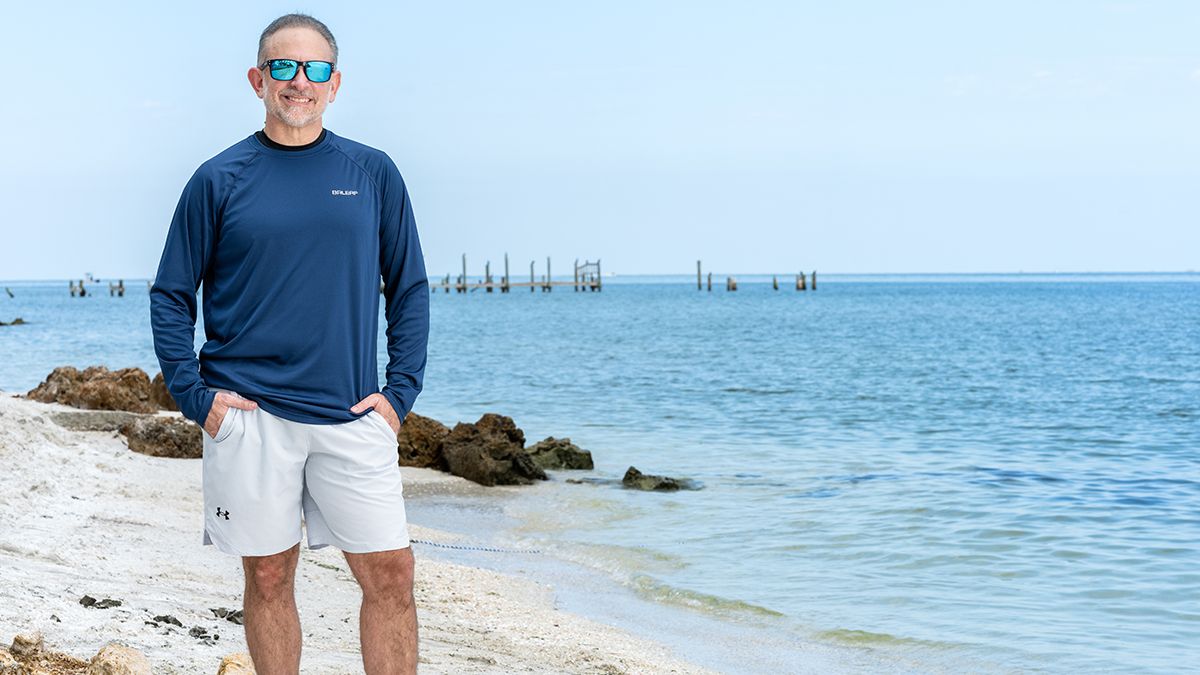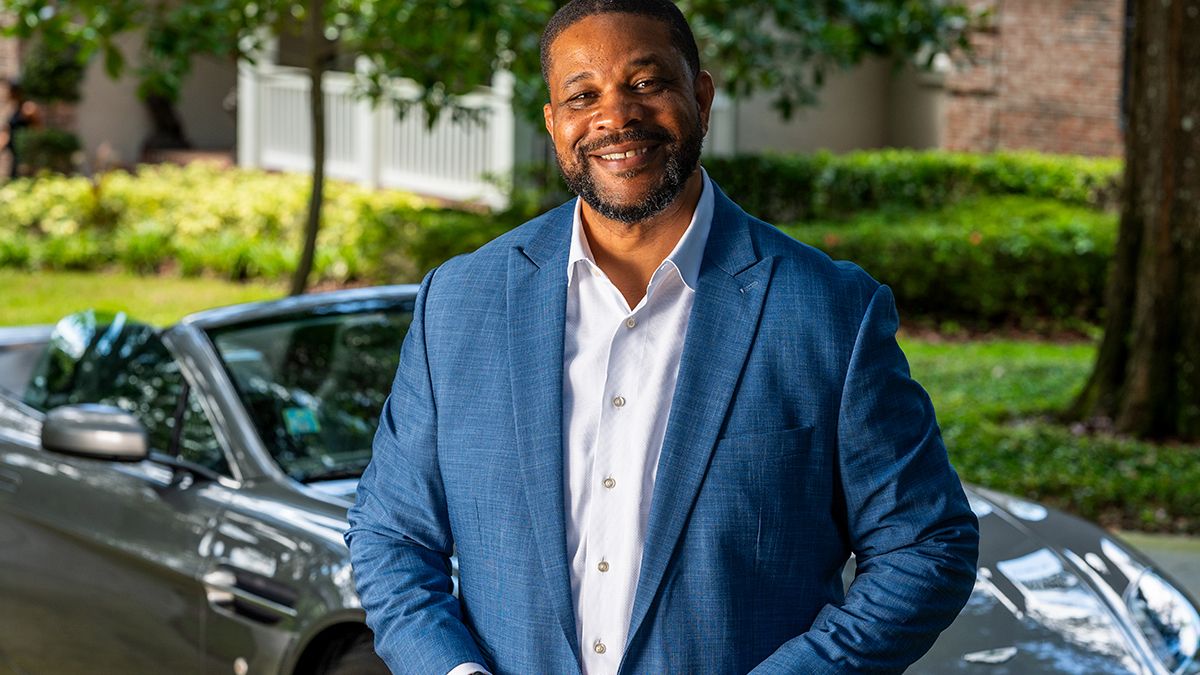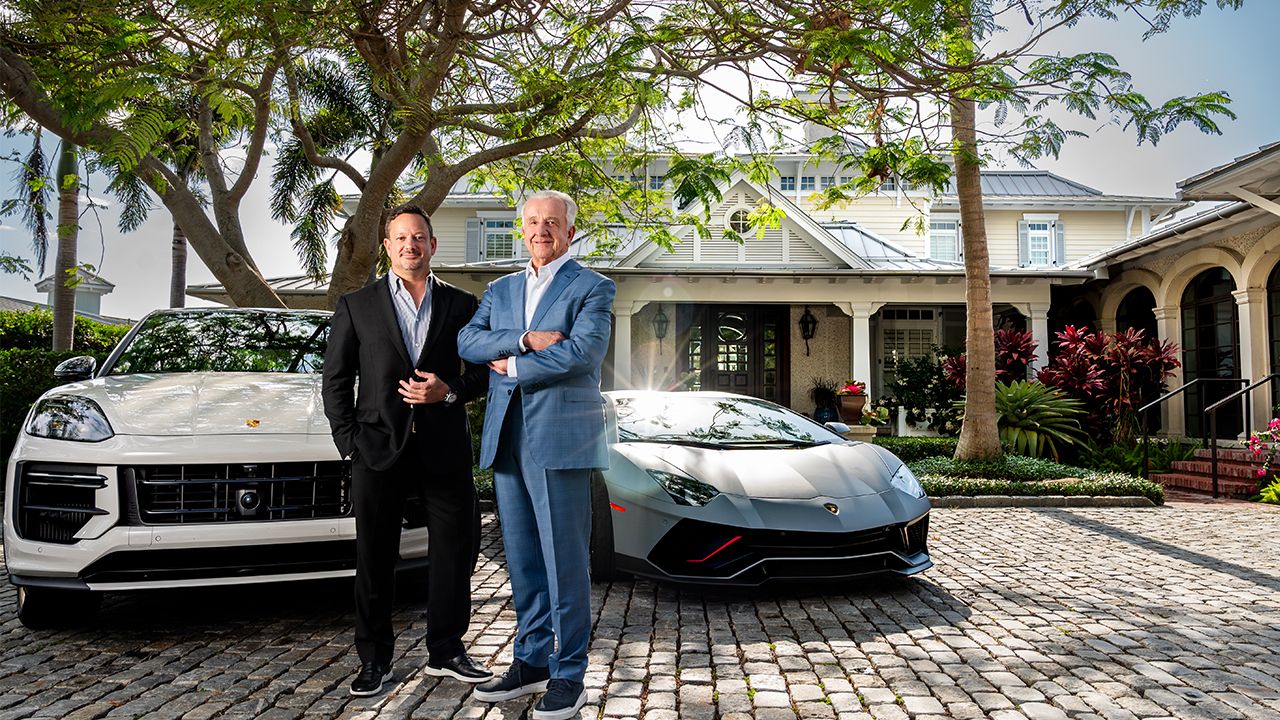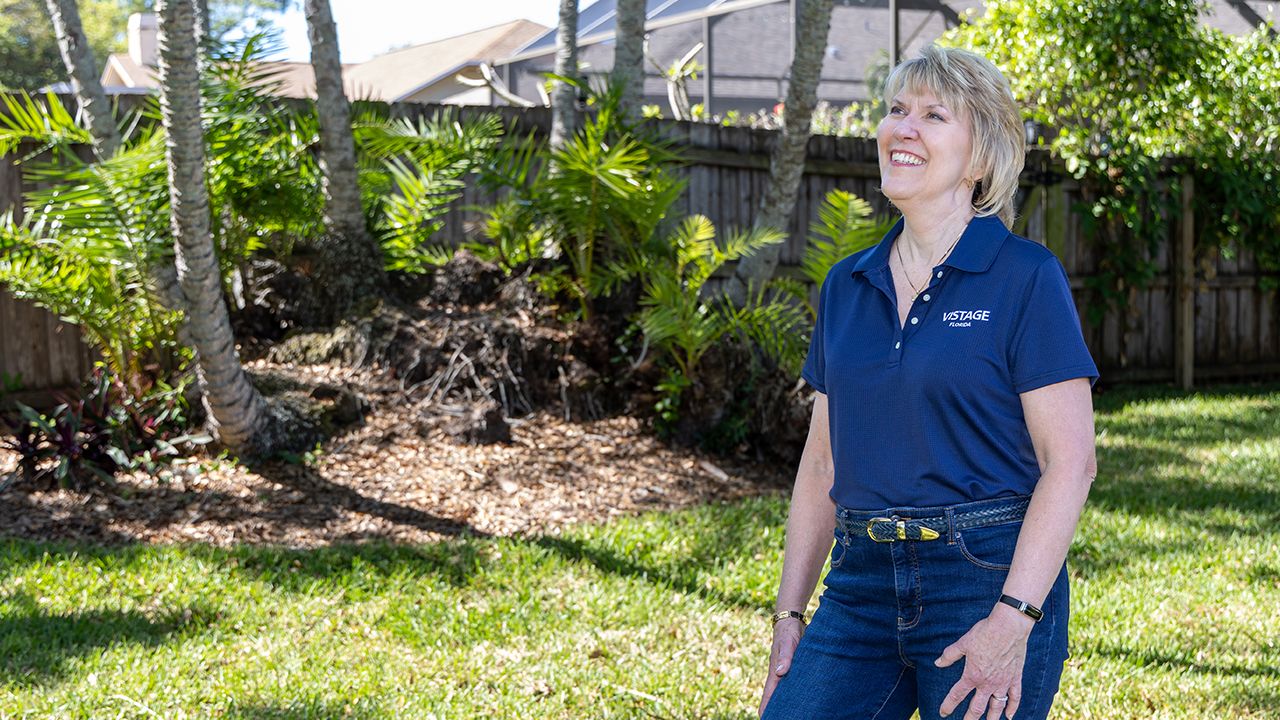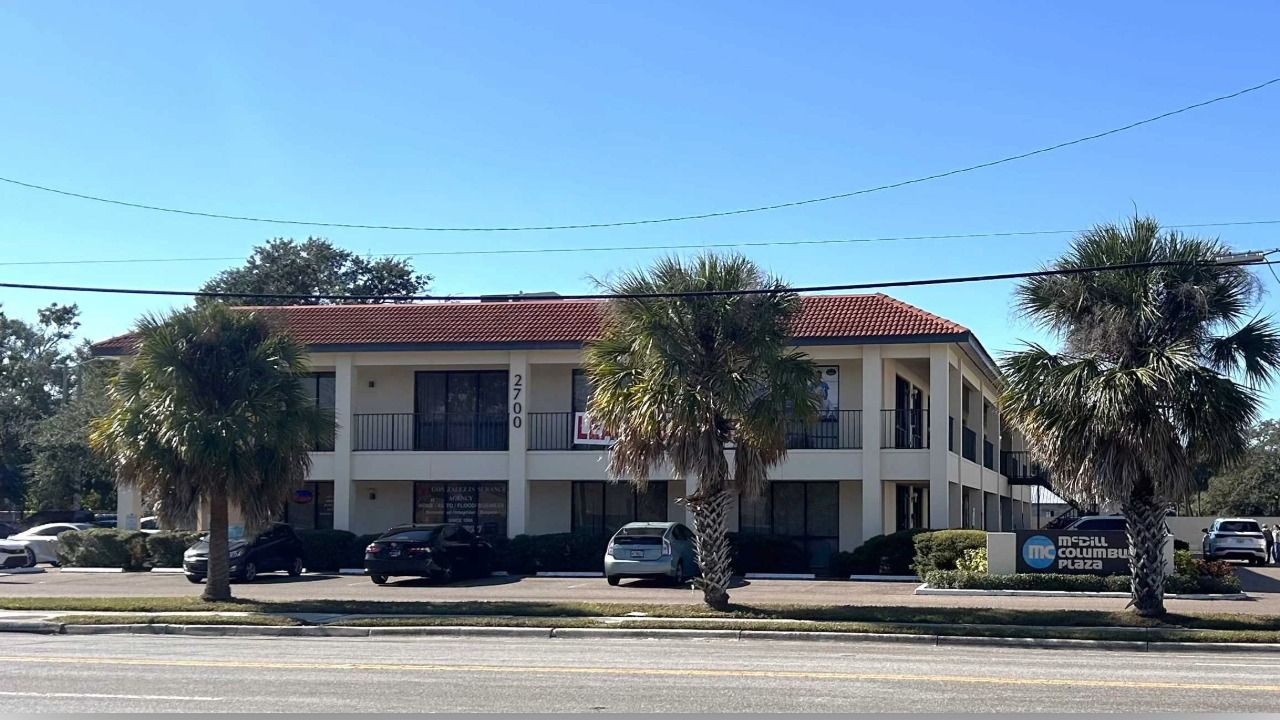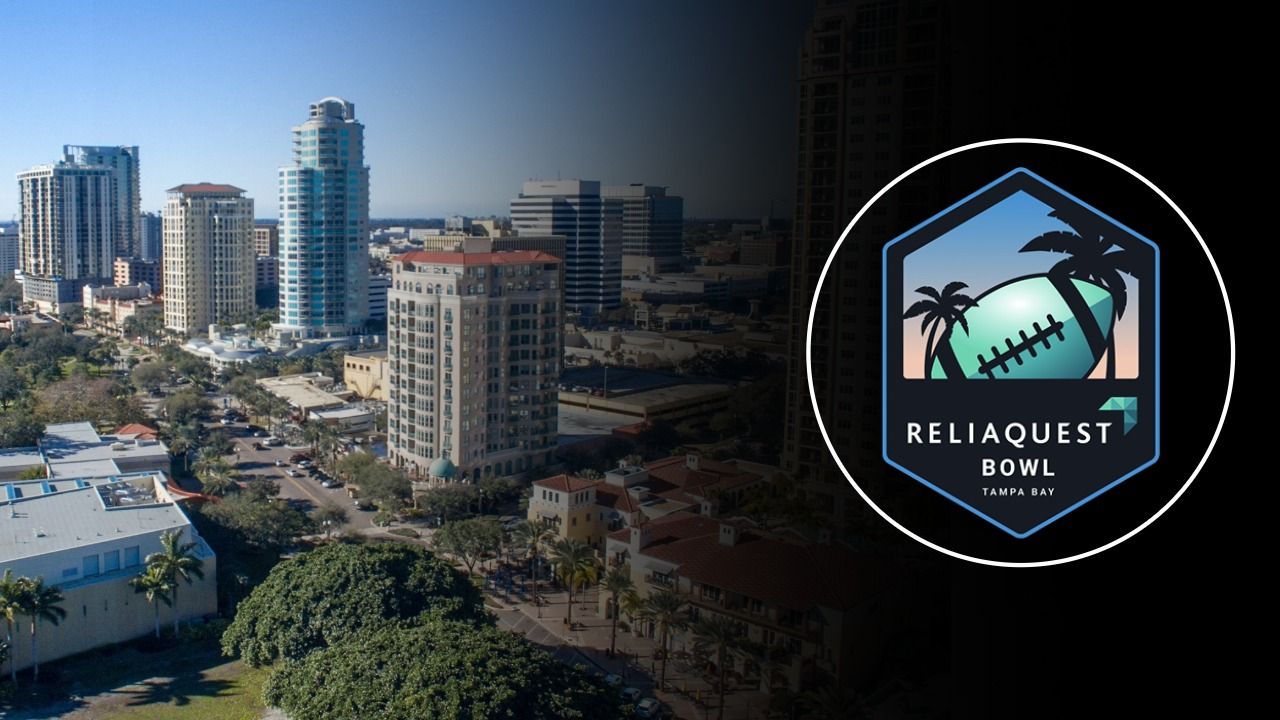He’s known as the “first” in a lot of publications and while he feels pride to hold such a label, he doesn’t let it define him or his business achievements – but that’s where the real story is. His determination, his intelligence and his exceptional ability to see a better way to do things is what defines Trevor Burgess.
Burgess was the founder and chief executive officer for C1 Bank, which went public on the New York Stock Exchange in 2014, the same year he was named the American Community Banker of the Year. And, yes, he achieved some publicity for being the first, openly gay bank CEO.
C1 Bank eventually was sold to the Bank of Ozarks for $402 million, in 2016. That same year, when he was 44 years old, he left C1 to travel the world with his family.
But not one to stay still for long, he resurfaced in the Tampa Bay business world, this time dealing in a different type of murky water, with Neptune Flood Insurance.
In May 2023, Neptune sold a minority stake to private equity firms Bregal Sagemount and FTV Capital.
At first, Burgess seems rather stoic. Not the loudest voice in the room or one to act in a way that naturally draws your attention. He has impeccable taste, which one small glimpse into his immaculate home will prove evidence of. He opens up slowly and, when that happens, you realize he lives in his head a lot.
He is always thoughtful and intentional about what he says, the words he uses and the tone in how those words are said.
He grew up around academia and that sort of early experience is evident in how he conducts himself.
***
Burgess was born in Sacramento, California. His father was a molecular biologist and a professor at the University of California Davis. When he was three years old, his family moved to Hanover, New Hampshire and Burgess’ father became a professor at Dartmouth College.
He was seven when his parents divorced. His father moved to Miami and his mother remained in Hanover to raise Burgess and his younger brother.
“She was a single mom and hadn’t worked before,” says Burgess. She got a job at Dartmouth, as a secretary.
“From a very early age, I had a desire to work hard, be successful and create opportunity for myself. To be in control of my own destiny,” he says.
He spent time with his father, visiting him in Coral Gables for six weeks every summer and every other Christmas. At the time, his father was a professor of biology at the University of Miami.
“We’d come down and visit him. We’d go to Disney,” Burgess says. “But I viewed myself as a kid from rural New Hampshire. And that was really my upbringing.”
Burgess was an involved student. He was the first student to be elected to the community school board, a school board that was created by an Act of Congress due to its interstate nature, to fill the void for a unique intersection of Hanover and Norwich, Vermont, where his high school, Hanover, was located.
“It was a progressive town. You had Dartmouth, all these professors and a lot of precocious kids. It was a student government where they had a real say in running the school and we convinced the school board to create a student position on the board,” Burgess recalls.
After high school, Burgess applied to a lot of different schools. With his mother, stepfather and brother moving to Nova Scotia, attending Dartmouth seemed like a no-brainer.
“They were leaving so I could stay where I was and I still wasn’t ‘home,’” he says, not shockingly wanting to be somewhat on his own, at that age.
“A lot of therapy later, as I really reflect on it, I got the sense that I probably made the choice to stay because I thought that if nothing changed, I could keep everything under control and under wraps, as it related to my sexuality,” Burgess admits. “If nothing could change, then nothing had to change.”
At the time, in Hanover, there was no internet and no concept of what a gay person was, he says.
“I didn’t even know that existed, so it took me until I was 18 or 19 to sort of figure out, ‘Oh, wait a second, that’s what I am,’” he says. “Obviously, it didn’t work to keep it all under wraps. That’s not how nature works.”
In college, Burgess majored in government and had a concentration in filmmaking.
“I liked the idea of having a liberal arts education and really learning to learn,” he says.
He became the president of his fraternity, which was short-lived.
“After I came out, I became the president of the gay students’ group and some of the kids in my fraternity wrote a paper about me in the Dartmouth Review,” Burgess shares. His description of the wording of the article can be best described as hate speech.
“Once I came out, I always just had this very secure sense about myself and it became a position of power, rather than a weakness,” Burgess says. “From that point on, I never questioned or was closeted. I think that has really helped me in my business career and being ‘out’ on Wall Street, later in life.”
Burgess came out in 1991, during a threatening time for the gay community in the United States.
“It’s important to remember the time. This was when HIV/AIDS was very much on everyone’s mind and agenda,” Burgess says. “When I came out to my mother, she was very concerned that I was going to die of AIDS. And I was too, in part, because there were no gay men older than me who were alive. They were all dead or dying.”
***
From government and filmmaking focuses, in college, it might seem like a leap to get to Wall Street but, Burgess explains, “If you go to an Ivy League school, there are really two things that people do afterward.”
If not pre-med, it’s investment banking or consulting, he says.
He admits it was his precocious streak again, but he was intentional about including his status as president for Dartmouth’s gay students’ group on only some of the resumes he sent out.
Out of dozens of resumes that he sent, Burgess says only one company gave him an interview after seeing that line item on his resume. It was Monitor Company, a strategic consulting firm run by a group of Harvard Business School professors, based in Cambridge, Massachusetts.
“I thought, if they’re the one group that will hire me, and I can be true to who I am, then that’s pretty cool,” Burgess says. This was 1994.
Burgess remained at Monitor for years, doing strategy consulting. He worked on projects for AT&T with their calling card strategy. He lived in the Philippines for about six months, working on a Coca-Cola project.
He describes the experience as one that contributed greatly to his success on Wall Street and in business, in general.
“These people were super smart and just cared about great outcomes for their clients by bringing the best minds together to work on things,” Burgess says. “Women, people of color, gays and lesbians, it didn’t matter. Only how they could get the best and the brightest in the room?”
A page in a lesson many could learn from, in the world in which we live these days.
“You really learn how to be successful, in business, from needing to be a consultant and advise people on their [business],” Burgess says.
After his time at Monitor, he transitioned to the investment banking world and joined Morgan Stanley’s technology group, first as a consultant.
“I went to work with Morgan Stanley to help them think about transforming their technology,” he recalls. “The big idea I had was to get every investment banker a laptop…it was cutting edge, at the time.”
The bankers were impressed, so after about six months of consulting work, Burgess was asked to join the team as an investment banker.
At Morgan Stanley, Burgess worked with the likes of Mary Meeker and Ruth Porat. Meeker, a venture capitalist, has been called the “Queen of the Internet” and has been listed on Forbes’ Most Powerful Women in the World list. Porat was chief financial officer for Morgan Stanley, for five years, before becoming chief financial officer of Alphabet and its subsidiary Google.
During his time at Morgan Stanley, Burgess helped to raise over $50 billion for more than 100 companies, including Chipotle’s IPO and other well-known brands.
“I remember in the IPO [for Alta Vista] there was so much writing about the number of eyeballs and nothing about money. It was all about how many views you were getting, how many eyeballs and how many clicks,” Burgess says. “But there was no translation of that into a revenue model. One of the things I learned, very early on, is that a company will be valued based upon its ability to earn money.”
And that understanding is what has led Burgess to keep finding success, in whatever venture he entertains.
“I’ve always designed companies so that they can make money. And that’s not a common thing, especially for technology start-ups,” he says, whether it be banking or something seemingly different, like flood insurance.
But first, it was time to build a bank.
***
In 2006, Morgan Stanley transferred Burgess to London. At the time, he was running the capital markets execution group. A big first in the industry, Burgess was the first, openly gay person to be made managing director at Morgan Stanley.
“In retrospect, you know, it was a really big deal, because there were a couple of people who were gay, who were managing directors, but not out, and so to be the first, openly gay [managing director] was a big deal,” Burgess says.
It might get annoying having something tagged onto your achievements that is simply a description of who you are, but Burgess says he sees the value in it and what it did for others.
“I don’t mind because much in the same way with women who are successful, they can’t stop being a woman. Right? You can’t. It’s your identity and your lived life. I always think that while this was difficult for me, how can we make it better for the next generation?” Burgess says. “And I don’t just mean the next generation of gay people, I mean people who are not given an automatic leg up because of who they are. If you’re super smart, let’s find a way for you to win, no matter what your background is.”
After his time in London, Burgess was ready to make a change and become an entrepreneur himself.
“I decided to quit my seven-figure job as a partner at Morgan Stanley, and, you know, I go home to my spouse and say, ‘Hey, I’m quitting my job,” Burgess says, laughing. At the time, he was in a long-term relationship with his now husband, Gary.
They moved back to New York and explored the idea of buying a watch company. Then the financial collapse of 2008 happened and his attention shifted somewhere else.
“It became clear that in banking, since World War II, the multiples that banks sell for have gone up and down, depending upon the economic cycle,” Burgess recalls. “Where you buy is really important if you want to be in banking. And in 2008, it was the lowest it has ever been since the Great Depression. I thought it was a neat opportunity.”
The wheels were already in motion in his brain. Banking would be the next great challenge Burgess would undertake.
“I looked at 35 different banks in the state of Florida, just going around and meeting them. While talking to people who worked with various investment bankers I kept seeing the same thing over and over again, which was bad banks who had made bad loans to bad people,” Burgess says.
Then he met Bill Sedgman, founder and CEO of Community Bank of Manatee.
At the time, the bank was in line to be taken over by the FDIC. But, as Burgess explains, this situation was different than the other ones Burgess had come across thus far.
“Community had made bad loans to good people; to honest businesspeople in Bradenton who had just been caught upside down by the recession. They wanted to pay the bank back but they just couldn’t because of what happened around them rather than because of some fraud,” Burgess says. “I said, okay, this is something I can work with.”
All Burgess had to do was convince regulators, the FDIC, the State of Florida – just them – that he, someone who had ever ran a bank before, could turn it around.
He eventually got all the approvals, though many predicted he’d fail. Spoiler alert: Burgess did not fail.
C1 Bank, which was the rebranded bank that evolved from Community Bank of Manatee, went on to be wildly successful. It went public on the New York Stock Exchange in 2014, and later sold for more than $400 million.
“Ringing the bell at the New York Stock Exchange and being the first openly gay CEO of [a bank] was pretty cool,” Burgess admits. “All because of this little bank, in St. Petersburg. I think that was good for St. Pete.”
Not long after that bell rung at the Stock Exchange, Burgess decided to exit to “retirement.”
***
Burgess was 44, he and his husband had a daughter, and he felt it was time to take a step back to enjoy time with his family.
The family decided to see the world together, 13 countries to be exact.
“I’m unemployed, I have some money, I felt like, ‘Let’s go really experience life and show our daughter different cultures,’” Burgess says.
Amsterdam and London were notable standouts in their travels.
“I think, in retrospect, it was great. For her to grow up a little bit and spend time with her dads,” Burgess says. Something of note, he softens and glows when speaking of his husband and daughter, relaxing more than usual and truly showing another side of himself.
After returning to the states, the Burgess family lived in Boston for a while. Burgess had family living there at the time, but then life brought them back “home” to St. Petersburg.
He dove into the real estate development industry, with TRB development, building homes in Charlotte and Manatee County. That company is now moving into St. Petersburg.
One day, Burgess received a LinkedIn message from Bill Martin, who used to work for Bankers Insurance in St. Peterburg. The two had gone through Executive Leadership Florida together.
“He contacted me and said, ‘I have this idea around flood insurance. And I need an entrepreneur and I need some money. And I love what you did at the bank. Would you come talk to me about it?’” Burgess recalls. “So, I put in a million and a half dollars of equity, and half a million dollars of debt, and bought a majority stake in the company, which was a series of ideas at that time. We used that money to hire a team of technologists to build what ultimately became Neptune.”
Neptune Flood Insurance currently has 48 employees and will post about $90 million in revenue in 2023.
“I view Neptune as this next progression in my entrepreneurial life,” Burgess says. “To take all the things I learned from Monitor, all the things I learned from Morgan Stanley, all the things I learned from C1Bank. All the lessons in business that I’ve been able to learn and it’s turned out to be incredibly successful.”
His life is rather glamorous now, seemingly. Burgess has helped build companies and he’s helped to sell them. He lives a grand life with his husband and daughter on Snell Isle in St. Petersburg. But he’s also dedicated to his routine, to his family and his purpose. He’s still a guy who grew up in a small town in New Hampshire.
And in business, he never forgets the attention to detail and the role he plays as CEO.
“As a CEO, you really feel that your job each day is to do whatever it is that can add the most value at that moment. If that moment is on a Saturday morning, cleaning an ATM screen, then that’s what you are going to do,” Burgess says with a laugh. See, he’s not always that serious. ♦
THE SECOND PANDEMIC
For a lot of people, COVID was the first pandemic of their lifetime; for Trevor Burgess, it was his second.
“In many ways, I’ve taken the second pandemic of my life, COVID, very seriously because it is a reminder, to me, of the earlier one we had to experience,” he says. He’s referring to the AIDS pandemic that occurred in the 1990s, right when he was coming of age and coming out to himself and the world.
With a scientist father and a brain that works well with data, Burgess says he knew how bad COVID was going to be.
“When it became clear that COVID was airborne, there were some obvious things that needed to happen and masking was one of them,” Burgess says.
Burgess donated, and raised, money to have St. Pete-branded masks made for the community.
“People loved it at first, but masking has taken on a whole other turn,” he says. “But it’s actually a really good way to protect yourself, and others, from getting sick. It’s just how the science works.”.
While COVID has provided an opportunity for Burgess to step up, uniquely, for the community, he is also a proud supporter of organizations like the St. Petersburg Free Clinic and the Dali Museum. For their 25th anniversary, in 2021, Trevor and Gary gave 10 gifts of $25,000 each to ten St. Petersburg-based charities. “Gary and I hoped to inspire others to support those most in need and to support our local community, a community that has provided an amazing background to raise our daughter and grow three fantastic businesses,” Burgess says.
Photos by Pamella Lee

